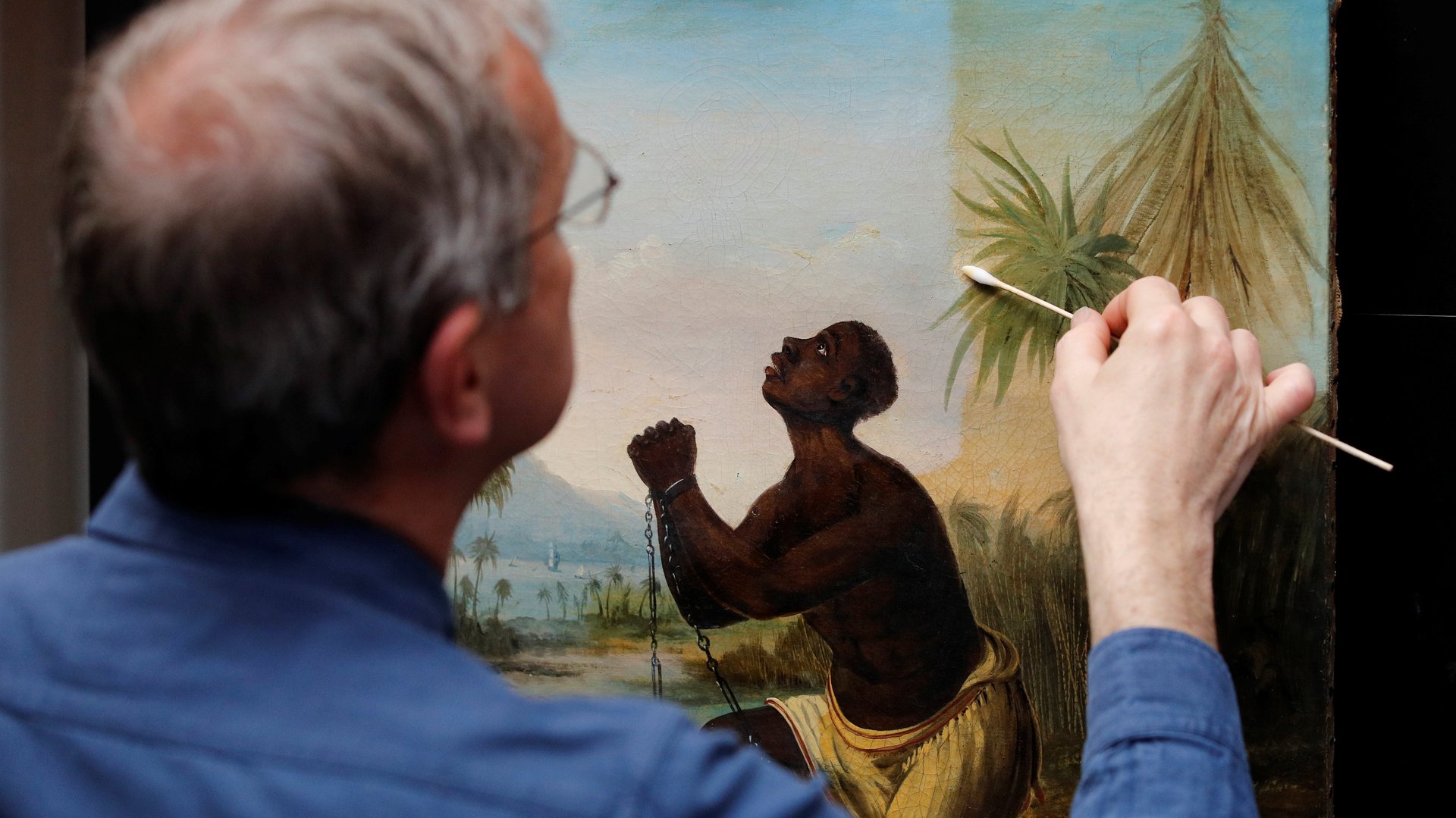A restored painting by 18th-century abolitionists shows the power of a political logo
Conservationists at the International Slavery Museum in Liverpool, UK are restoring a rare painting featuring a famous image that served as an early logo in support of a political cause—the abolition of the slave trade.


Conservationists at the International Slavery Museum in Liverpool, UK are restoring a rare painting featuring a famous image that served as an early logo in support of a political cause—the abolition of the slave trade.
The painting—“Am Not I A Man And A Brother,” made around the year 1800—shows an African slave, in chains, kneeling on a sugar plantation in the Caribbean. The painting was based on English potter Josiah Wedgwood’s design, first used on an anti-slavery medallion in 1787, as part of a political campaign by The Society for the Abolition of the Slave Trade. It would become the dominant image of the abolition movement, appearing on domestic goods, fashion accessories, and other items until the British slave trade was outlawed in 1807.
The restoration work comes ahead of Slavery Remembrance Day, on August 23. That date commemorates the start of a slave uprising in 1791 in what is now Haiti and the Dominican Republic.
Liverpool’s International Slavery Museum opened in 2007, to mark the day, and is located within Albert Dock, from where perhaps three-quarters of slave ships from Europe set sail in the decades leading up to abolition. Though Portugal was the first country to engage in the transatlantic slave trade, it was Britain that was the largest slave trading nation between 1640 and 1807, transporting millions (pdf) of Africans under brutal conditions to North America, South America, and elsewhere.
The image of the kneeling slave was based on key symbols of the abolition movement, meant to appeal to white audiences. Experts note the painting portrays the enslaved African as a passive victim, seeking freedom from morally righteous abolitionists. Capturing that sentiment, Benjamin Franklin once told (pdf) Wedgwood that his design “may have an Effect equal to that of the best written Pamphlet in procuring favour to those oppressed people.” However, black abolitionists like Olaudah Equiano and Ottobah Cugoano were the driving forces behind ending the slave trade.
This year’s Slavery Remembrance Day also coincides with the 400th anniversary of the start of slavery in the US, and arguably the true birth of the country.